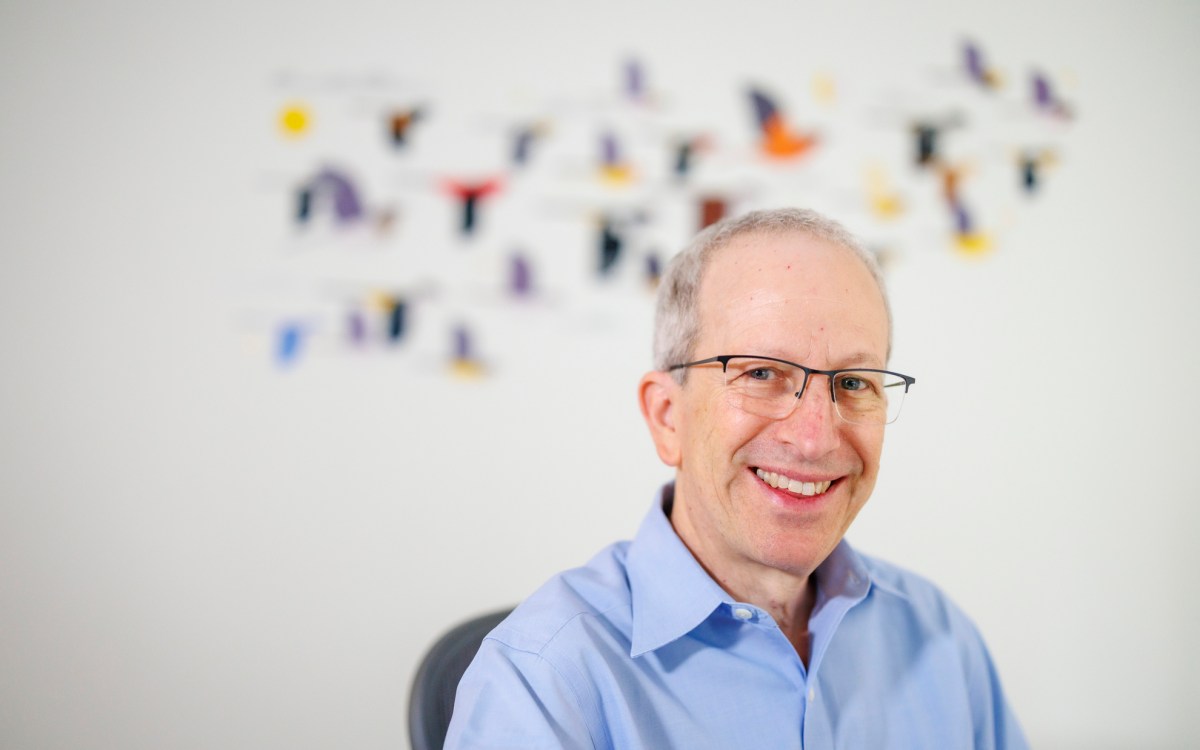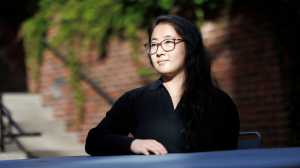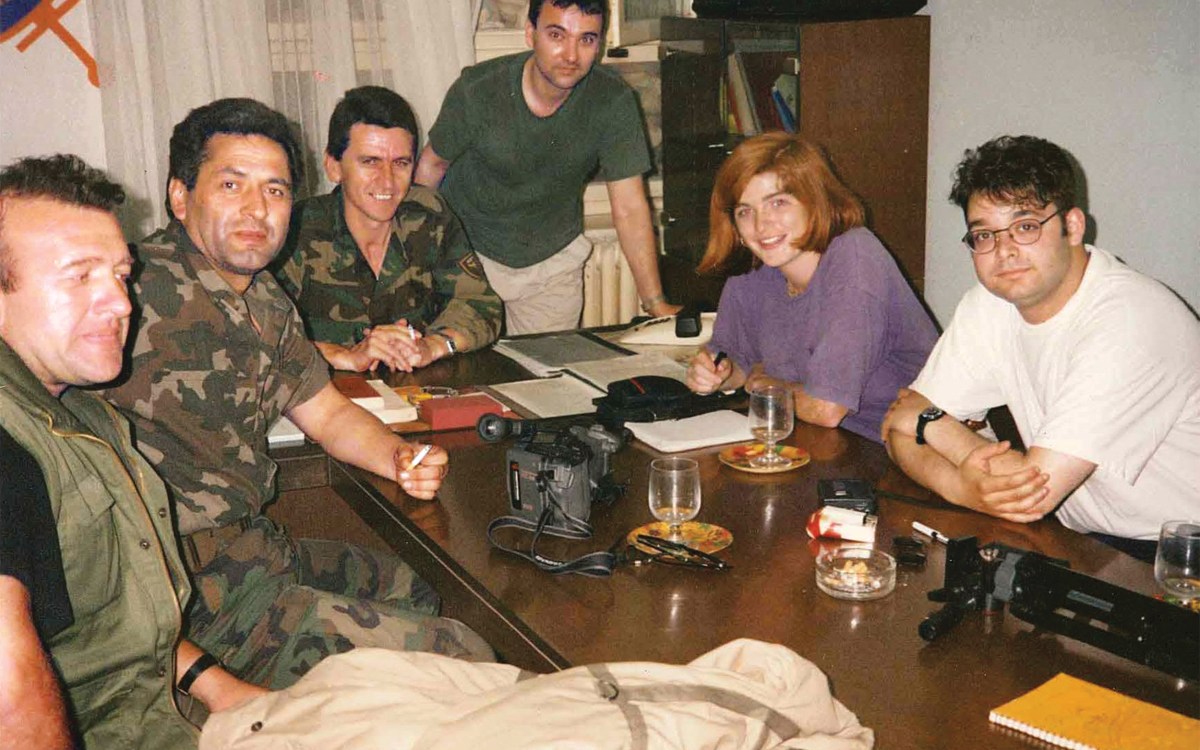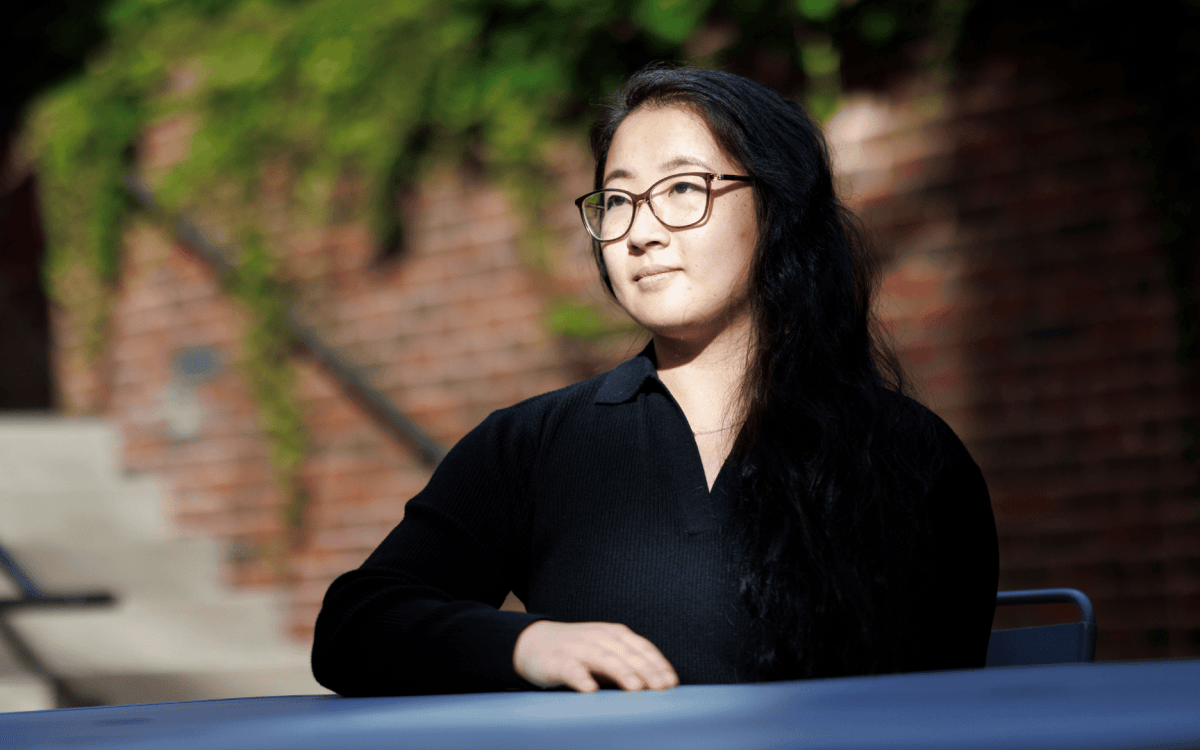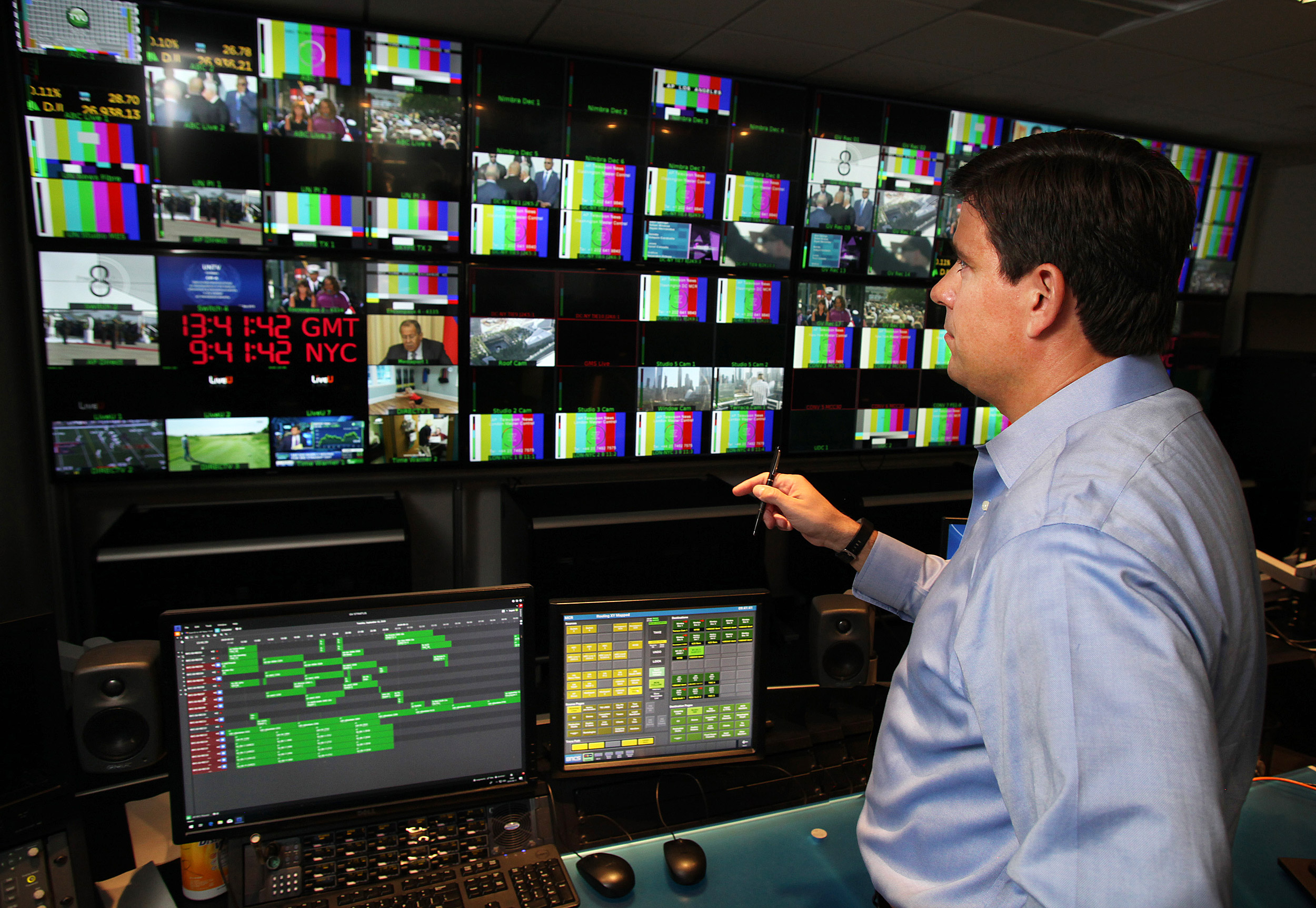
Michael Fabiano, AP vice president and general manager of revenue/Americas, in the AP’s New York headquarters control room.
AP Photo
Michael Fabiano wears many hats
From debunking ‘fake news’ to maintaining trust in media, AP sorts it all out
For nearly two centuries, the Associated Press (AP) has been at the forefront of delivering fair, accurate and unbiased news to the world. In today’s climate of “fake news,” the AP’s rigorous standards and fact-based journalism are more important than ever. According to a recent Pew Research poll, a majority of Americans distrust the government or each other, while nearly two-thirds have a negative view of news sources and the media. News organizations have felt these frustrations increase and many outlets, including the AP, are using new tools to combat the “fake news” outcry.
Michael Fabiano, A.L.M. ’16, and newly elected president of the Harvard Extension Alumni Association (HEAA), leads the AP’s business strategy for the Americas and has witnessed massive change within the industry. Before that, Fabiano worked for NBC News as vice president and general manager of NBC Digital Publishing, where he built a company-wide digital publishing business.He spoke to the Gazette about how technology shifted his mindset toward lifelong learning, the challenges facing news organizations and what AP is doing to solidify trust in the media.
Q&A
Michael Fabiano
Gazette: There has been an increased push by adults to continue their education past traditional schooling and to continue learning throughout their whole lives. How do you feel you can extend that push as new president of the HEAA?
Fabiano: I have firsthand experience of proactively retooling my skillset twice since beginning my business career. When the internet enabled mass globalization and exponential technological advancement, I witnessed a significant shift in business. I wanted an edge to stay relevant.
I worked full time and attended Columbia Business School’s Executive MBA program in 2005. Ten years later, I found Harvard Extension School’s journalism program. It was unique in that I was able to take classes in the law school in intellectual property, learn the latest in content management system technology, as well as explore how the internet has impacted writing and content creation.
A technological tipping point is occurring in higher education, allowing us to leap well beyond the traditional classroom lecture experience. Driven by interactive classroom software and artificial intelligence, society has, for the first time in history, an educational model that is quite different from the traditional classroom lecture — and arguably much more impactful.
My experiences have given me a depth of understanding of how continuing education programs are delivered to working adults and where the value is to corporations and students. Businesses can see value added immediately as experienced students bring classroom knowledge into the workplace. As a hiring manager, I want employees that have the persistence to work and attend school simultaneously.
Our board needs to function at a more strategic level than ever before, working with our incredibly talented alumni, integrating across the other Harvard schools, and positioning Harvard Extension School as the premier lifetime learning community that it is.
Michael Fabiano speaking at this year’s HEAA Commencement banquet in Annenberg Hall.
Photo by Alex Gagne
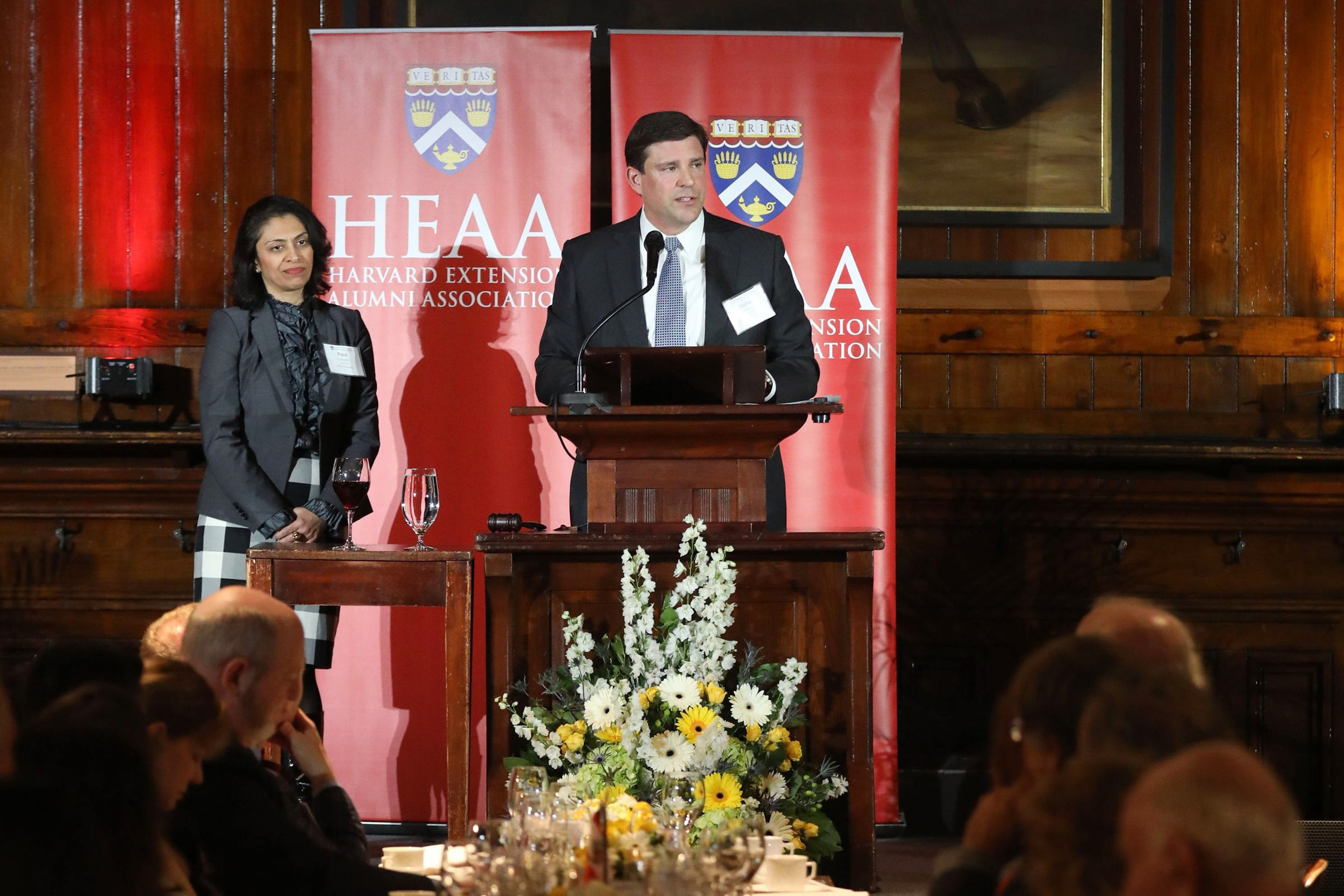
Gazette: Your career has allowed you to view the world, and in particular the media industry, from myriad different angles. Can you highlight some of the transformation you’ve experienced and where you think the industry is headed?
Fabiano: A good part of my career has been about helping organizations transform, and then manage the resultant tremendous changes. At NBC, my role in the strategy group was centered around repositioning a $16 billion company for a digital future through large scale initiatives. … I had the opportunity to work on properties such as the “Today” show on digital rights and asset management, develop disruptive international streaming business models with NBC News, create new programming for The Weather Channel, and enable a new e-commerce purchasing platform for video and images.
At the Associated Press, I am responsible for the Americas Media business. My team delivers content and technology that enable free speech globally. The way the AP works with customers is changing dramatically as massive consolidation across newspapers, television, and radio creates very large global distribution platforms. These new media organizations are operating at significant scale and are in various stages of maturity as they adjust to these new ecosystems. … For example, a single local TV station used to reach a finite demographic marketing area. Now with an app, they can reach the world. This has significant implications for how they manage technology and content. As part of a 100-member TV group for example, the complexity grows where they can offer an advertiser a large national audience.
Gazette: The AP is often at the forefront of any single major news event happening around the world. How does your organization aim to “get it right” when the term “fake news” is increasingly attached to a story that a particular person or group does not agree with?
Fabiano: While AP is a breaking news organization, we’d rather get it right than be first. We maintain and must keep very high standards in pursuit of the truth. Reporting objectively every day takes a special rigor that our editorial staff manages with great care. Having multiple verifiable sources, supporting data and presenting all sides of a story is the heart and soul of the AP. Many of our readers don’t realize that AP does not write any opinion pieces — it only reports the facts. Our content is licensed to 15,000 media outlets worldwide and our customers and members are authorized to write derivative intellectual property, in the spirit of progressing understanding, thinking, and democratic principles.
Fact-checking is in AP’s DNA. It’s something we have been doing since the 19th century. To counter the growing amount of misinformation online, AP has created three public news feeds. The first is called “Not Real News.” This is a roundup of some of the most popular but completely untrue stories and visuals of the week. None of these stories or visuals are legitimate, even though they may have been shared widely on social media. So AP debunks them.
“A single local TV station used to reach a finite demographic marketing area. Now with an app, they can reach the world.”
Second, the “Fake news” topic feed is a variety of stories from around the globe that have a combination of misinformation and some truth. This mixture of fact and fiction can create powerful myths. Our journalism is intended to not only cover “fake news” as a subject but debunk these myths or correct facts.
Finally, we have our fact-checking engine that delivers accountability journalism from AP journalists across the globe, holding the powerful to account for their words and actions.
Gazette: What are some of the new initiatives or goals from your organization that you would like to highlight?
Fabiano: We recently strengthened our news output … with [two] outside groups. We have a new relationship with the Howard Hughes Medical Institute’s [HHMI] Department of Science Educationto expand health and science journalism. When I first met with HHMI, we quickly recognized that our organizations’ mutual missions — to inform the world — were aligned. This was the anchor for all our work going forward and has resulted in a significant increase in quality science journalism.
The second content expansion area centers on journalism that broadly covers religion, faith, ethics, and spirituality. So, much of our global news coverage is related to these topic areas. This is funded by a $4.9 million grant from the Lilly Endowment. It was a significant joint collaboration between our Americas Media business and editorial teams.
It’s important to note that in both collaborations — and any with outside groups — AP retains full editorial control. We are and always have been a truly independent not-for-profit news organization, with no owners and no government funding.
Finally, my team is managing a new programming effort. AP Productions is a new function within the business arm of The Associated Press that combines three market opportunities: programming/production, podcasts, and books. All of these produced works have a common thread that leverages AP’s brand, journalism, storytelling, content, and distribution into fully realized projects. These projects can be executed by AP’s own growing production capability, or with third party partners, depending on the opportunity.
